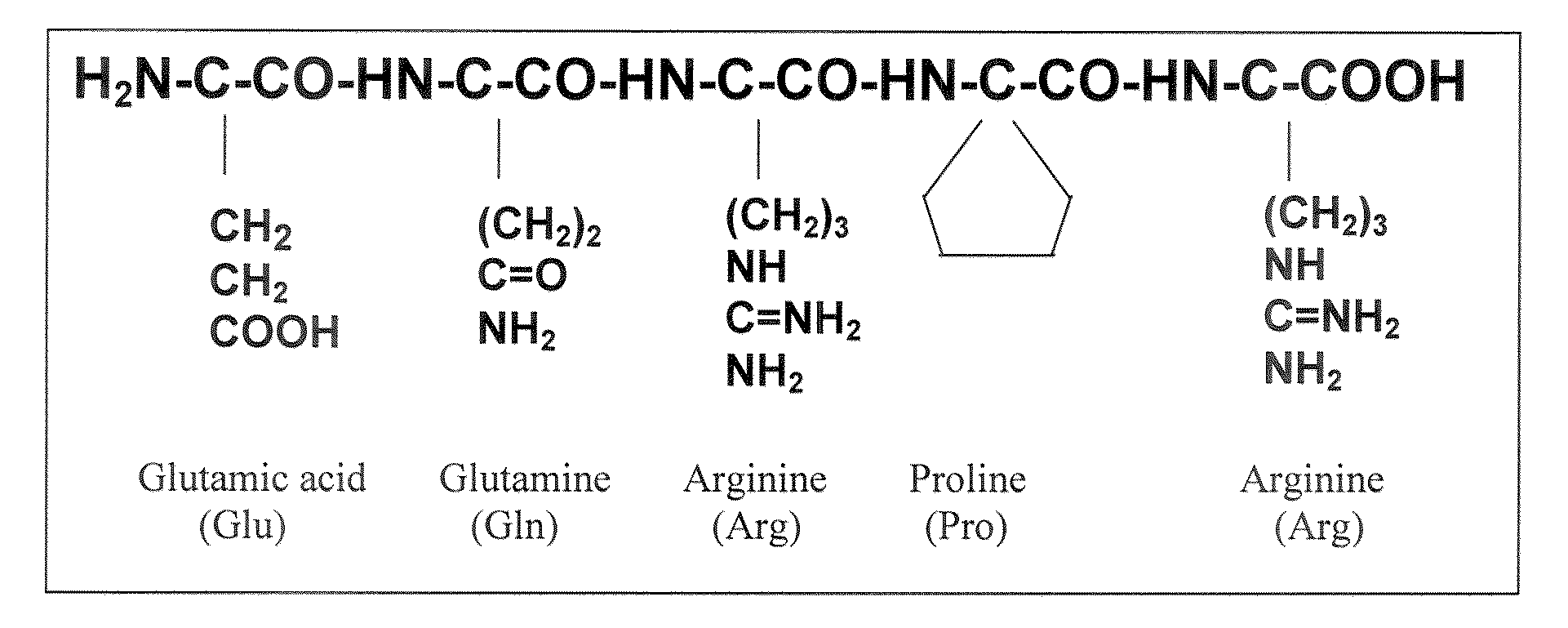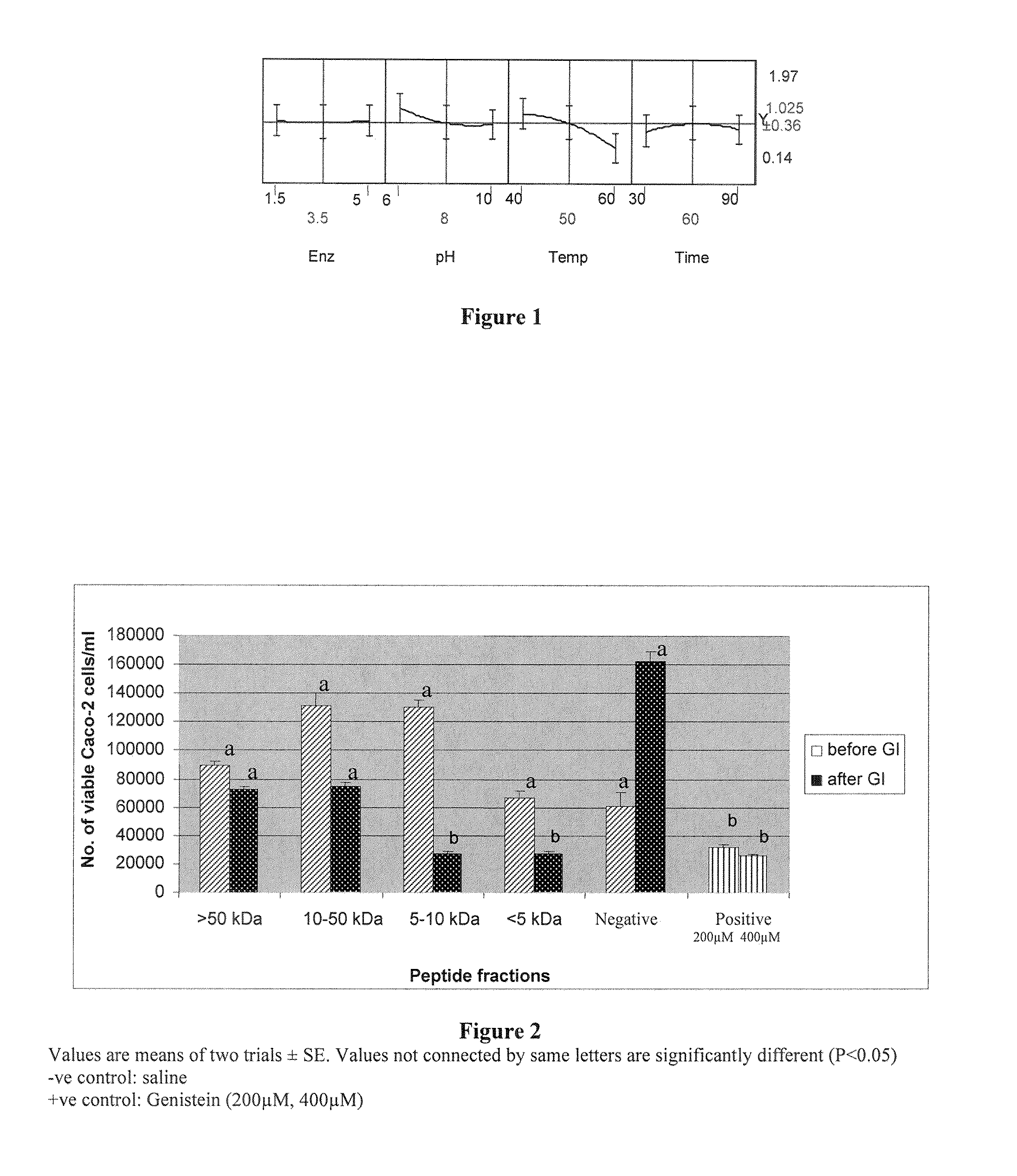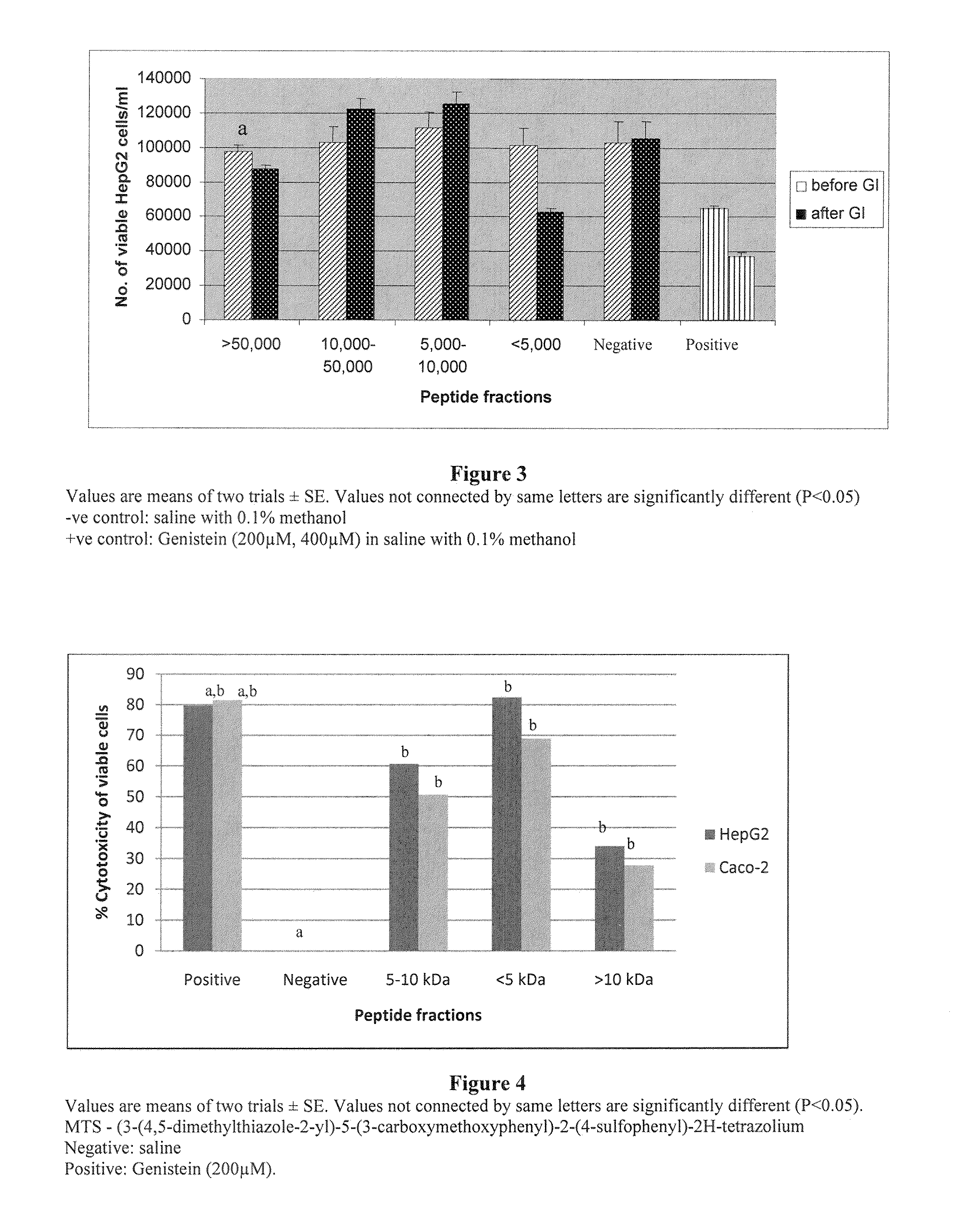Bioactive pentapeptides from rice bran and use thereof
a technology of bioactive proteins and pentapeptides, which is applied in the direction of peptide/protein ingredients, peptide sources, metabolism disorders, etc., can solve the problems of no improvement in mortality rate, cancer treatment, obesity-related and age-related chronic diseases are life-long and can have side effects, and the risk of chronic complications of obesity-related diseases is a leading cause of death
- Summary
- Abstract
- Description
- Claims
- Application Information
AI Technical Summary
Benefits of technology
Problems solved by technology
Method used
Image
Examples
example 1
Enzymatic Hydrolysis of Rice Bran by Alcalase Enzyme and Protein Contents
[0070]A four-factorial response surface design optimization with optimum degree of hydrolysis as well as digested protein contents as response values were determined. The four parameters, enzyme concentrations [1.5, 3.5 and 5 Alcalase units (AU)], pH (6, 8, and 10), temperature (40, 50, and 60° C.), and incubation time for digestion (30, 60, and 90 min), were fitted to generate optimum concentrations of enzyme, pH, time and temperature for achieving optimum degree of hydrolysis. Box-Behnken surface response using the JMP 7.0 statistical software was used to evaluate the interactions between parameters to generate optimum values for enzymatic hydrolysis. A degree of hydrolysis at 23.4% was considered to be optimum, with an E / S ratio of 0.01.
[0071]Digested protein contents (in mg / mL) were obtained for each factorial combination. For example, at 1.5 AU enzyme concentration, pH 8, and 40° C. for 60 min of digestion...
example 2
Colon and Liver Anti-Cancer Activity Evaluation of GI-Resistant and Nonresistant Rice Bran Peptide Hydrolysate Fractions
[0072]The trypan blue dye exclusion assay was conducted to determine cell viability after treatment of cells with peptide fractions. This assay evaluates the number of viable cells that remain after exposure of peptides on to Caco-2 as well as HepG2 cells. Both GI resistant peptides as well as non-GI resistant peptides were tested on colon and liver cancer cell lines.
[0073]FIG. 2 depicts the effect of GI and non-GI resistant peptide fractions on Caco-2 cells. On Caco-2 cells, GI-resistant peptide fractions of sizes 10 and >50 kDa), non-GI resistant fractions and negative control. There was an approximately 3-fold reduction in viable cells between GI-resistant and non-GI resistant fractions that were below 10 kDa. Similar patterns of inhibition between fractions that were above 10 kDa were not observed. The positive control used was genistein at concentrations of 20...
example 3
Colon and Breast Ant-Cancer Activity Evaluation of GI-Resistant and Nonresistant Rice Bran Peptide Hydrolysate Fractions
[0076]Treatment with rice bran 50, 10-50 and 5-10 kDa fractions revealed no growth inhibitory effect on colon and liver cancer cells, however, the growth inhibitory activity for colon and breast cancer cells of rice bran peptide is present in the <5 kDa fraction.
[0077]The clonogenic assay also indicates the toxicity of the <5 kDa fraction to HCT-116 cells (FIG. 7). The cytotoxicity of the <5 kDa fraction was pronounced after treating the cells with 500 g / mL and that the IC50 dose of the <5 kDa fraction was 770 g / mL. These results indicate that <5 kDa peptide fraction of the rice bran has a potent anti-tumor activity for colon cancer cells.
[0078]As discussed, the screening for determination of anti-cancer activity was done employing the MTT assay and subsequently confirmed by clonogenic assay on the anti-cancer fraction. The time- and concentration-dependent growth ...
PUM
| Property | Measurement | Unit |
|---|---|---|
| pH | aaaaa | aaaaa |
| pH | aaaaa | aaaaa |
| pH | aaaaa | aaaaa |
Abstract
Description
Claims
Application Information
 Login to View More
Login to View More - R&D
- Intellectual Property
- Life Sciences
- Materials
- Tech Scout
- Unparalleled Data Quality
- Higher Quality Content
- 60% Fewer Hallucinations
Browse by: Latest US Patents, China's latest patents, Technical Efficacy Thesaurus, Application Domain, Technology Topic, Popular Technical Reports.
© 2025 PatSnap. All rights reserved.Legal|Privacy policy|Modern Slavery Act Transparency Statement|Sitemap|About US| Contact US: help@patsnap.com



